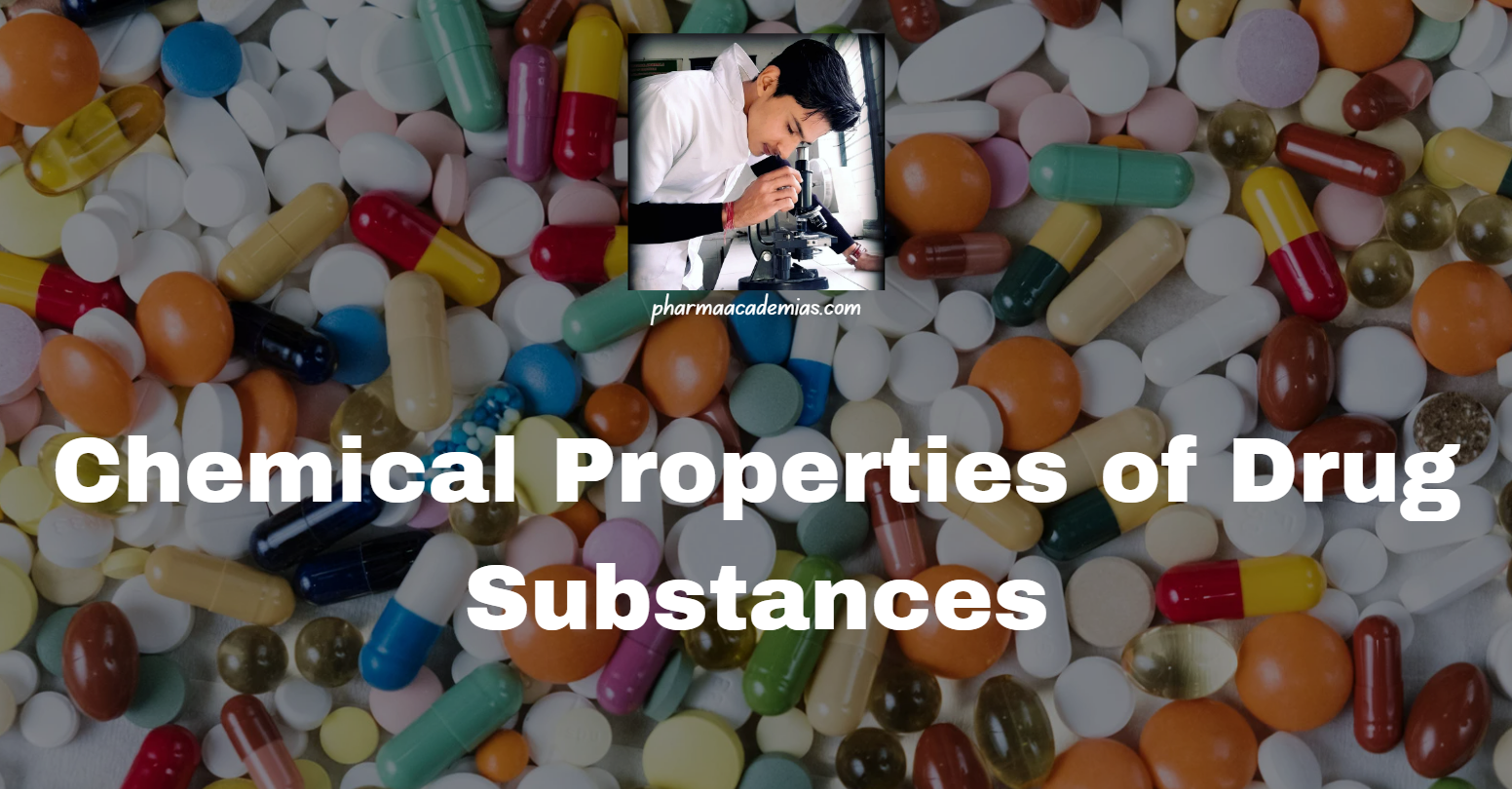Understanding the chemical properties of drug substances is critical for predicting their stability, compatibility, and overall behavior during formulation, storage, and administration. Here, we detail key chemical processes including hydrolysis, oxidation, reduction, racemization, and polymerization, along with their significance in pharmaceutical development.
1. Hydrolysis
Hydrolysis is a chemical reaction in which water reacts with a compound, leading to the breakdown of that compound. In pharmaceuticals, hydrolysis often involves the reaction of an ester or amide bond in the drug molecule with water.
Types of Hydrolysis:
Base-Catalyzed Hydrolysis: Involves the presence of hydroxide ions, which accelerate the reaction.
Acid-Catalyzed Hydrolysis: Involves protons that enhance the breakdown of the compound.
Relevance in Drug Stability:
Hydrolysis can lead to the degradation of drugs, especially those containing ester, amide, or lactam linkages.
Example:
Penicillins: Beta-lactam antibiotics like penicillins are sensitive to hydrolysis, leading to the formation of inactive products.
Aspirin: Hydrolysis of aspirin (acetylsalicylic acid) can lead to the formation of salicylic acid, which may have different therapeutic effects.
Stability Testing:
Accelerated Stability Studies: Involves storing the drug at elevated temperatures and humidity to induce hydrolysis and observe degradation patterns.
Buffer Solutions: Stability studies at various pH levels help determine susceptibility to hydrolysis in different environments.
2. Oxidation
Oxidation is a chemical reaction that involves the loss of electrons from a molecule, often resulting in the formation of reactive oxygen species (ROS). In pharmaceuticals, oxidation can lead to degradation of active ingredients.
Mechanism:
Radical Initiation: Free radicals, often generated by heat or light, can initiate oxidation.
Propagation: The oxidized product can further react with other molecules.
Termination: The reaction stops when two radicals combine or react with antioxidants.
Relevance in Drug Stability:
Oxidation can lead to the formation of by-products that may be less effective or harmful.
Example:
Vitamin C (Ascorbic Acid): It can oxidize to dehydroascorbic acid, leading to a loss of its antioxidant properties.
Ciprofloxacin: Oxidative degradation of this antibiotic can lead to loss of efficacy.
Stability Testing:
Oxidation Studies: Involves exposing the drug to conditions that promote oxidation (e.g., elevated temperatures, light).
Use of Antioxidants: Compounds like ascorbic acid or tocopherols are often added to formulations to minimize oxidative degradation.
3. Reduction
Reduction is a chemical reaction involving the gain of electrons or the decrease in oxidation state by a molecule. In pharmaceuticals, reduction can often be used to convert a drug into a more active or stable form.
Mechanism: Involves the transfer of electrons from a reducing agent to the substrate, often facilitated by enzymes in biological systems.
Relevance in Drug Stability: Reduction can alter the activity and properties of a drug, either positively or negatively.
Example:
Nitro Compounds: Nitro groups can be reduced to amines, often resulting in a more active form of the drug.
Sulfones and Sulfoxides: Can undergo reduction to form thiols, which may have different pharmacological effects.
Stability Testing:
Controlled Reduction Conditions: Evaluating the stability of the drug under various reducing conditions to ensure efficacy and safety.
Reactions with Reducing Agents: Testing the impact of reducing agents on the stability of the drug during formulation.
4. Racemization
Racemization is the process by which an optically active compound (chiral compound) converts into a mixture of its enantiomers (racemate). This can occur through various mechanisms, often involving changes in pH, temperature, or light.
Mechanism:
Involves the interconversion between the two enantiomers, which can be catalyzed by acids or bases, and is often a reversible process.
Relevance in Drug Stability: The biological activity of enantiomers can differ significantly; thus, racemization can affect drug efficacy and safety.
Example:
Thalidomide: One enantiomer is effective for treating morning sickness, while the other is teratogenic.
Beta-blockers (e.g., Propranolol): One enantiomer may exhibit therapeutic effects while the other could be inactive or harmful.
Stability Testing:
Enantiomeric Purity: Regular monitoring of enantiomeric ratios during stability studies to detect racemization.
Impact of Conditions: Understanding how temperature, light, and pH influence racemization.
5. Polymerization
Polymerization is a chemical reaction in which small molecules, known as monomers, combine to form a larger, more complex structure called a polymer. In pharmaceuticals, polymerization can occur during the manufacturing process or storage, affecting drug properties.
Types of Polymerization:
Addition Polymerization: Involves the joining of monomers without the loss of any small molecules.
Condensation Polymerization: Involves the joining of monomers with the loss of small molecules (e.g., water).
Relevance in Drug Stability:
Uncontrolled polymerization can lead to changes in viscosity, solubility, and bioavailability of the drug.
Example:
Insulin: Can polymerize under certain conditions, affecting its stability and activity.
Methacrylate Polymers: Used as drug carriers in formulations, where polymerization needs to be carefully controlled.
Stability Testing:
Controlled Polymerization Conditions: Evaluating polymerization potential under varying conditions (temperature, concentration).
Rheological Studies: To assess the viscosity changes in drug formulations over time due to polymerization.
Conclusion
Chemical properties such as hydrolysis, oxidation, reduction, racemization, and polymerization play vital roles in the stability, efficacy, and safety of drug substances. A thorough understanding of these chemical processes allows formulators and pharmaceutical scientists to design and develop robust drug formulations with improved shelf life and therapeutic outcomes. Regular stability testing and characterization of chemical behavior under various conditions are essential practices in the pharmaceutical industry to ensure the reliability of medications.

